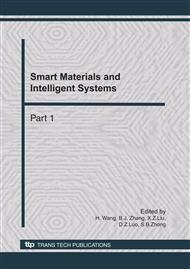p.271
p.277
p.283
p.287
p.293
p.298
p.303
p.308
p.313
Design and Implementation of Maxi-Linear Deviation Search Algorithm Based on Improved ICP
Abstract:
To solve the problem of calculating the maximum linear deviation in block cipher algorithm linear analysis, the paper has proposed a search method and improved algorithm based on iterative closest point (ICP) of the maximum deviation. The ciphertext and its coefficient matrix is initialized as range image matrix, using ICP algorithm to calculate the best match state of adjacent range image, and the linear deviation value of round function transformation of this time was proved to be the maximum linear deviation by applying generalized Walsh spectrum; by proposing the initial rule corresponding distance, determined the initial corresponding relation of iterative algorithm, each round of transformation matrix would be assigned to the next round as the initial transformation matrix which has improved the matching speed of the ICP algorithm; the rationality and effectiveness of this new search algorithm can be proved by comparing with the maximum linear deviation search algorithm put forward by M.Matsui.
Info:
Periodical:
Pages:
293-297
Citation:
Online since:
October 2010
Authors:
Price:
Сopyright:
© 2011 Trans Tech Publications Ltd. All Rights Reserved
Share:
Citation:


